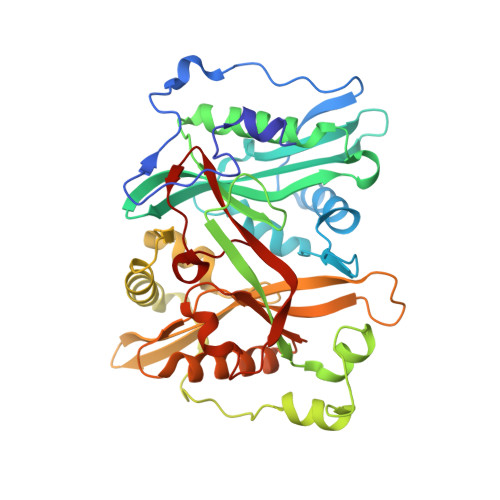Exploring Subsite Selectivity within Plasmodium vivax N -Myristoyltransferase Using Pyrazole-Derived Inhibitors.
Rodriguez-Hernandez, D., Fenwick, M.K., Zigweid, R., Sankaran, B., Myler, P.J., Sunnerhagen, P., Kaushansky, A., Staker, B.L., Grotli, M.(2024) J Med Chem 67: 7312-7329
- PubMed: 38680035
- DOI: https://doi.org/10.1021/acs.jmedchem.4c00168
- Primary Citation of Related Structures:
8VKA, 8VKB - PubMed Abstract:
N -myristoyltransferase (NMT) is a promising antimalarial drug target. Despite biochemical similarities between Plasmodium vivax and human NMTs, our recent research demonstrated that high selectivity is achievable. Herein, we report Pv NMT-inhibiting compounds aimed at identifying novel mechanisms of selectivity. Various functional groups are appended to a pyrazole moiety in the inhibitor to target a pocket formed beneath the peptide binding cleft. The inhibitor core group polarity, lipophilicity, and size are also varied to probe the water structure near a channel. Selectivity index values range from 0.8 to 125.3. Cocrystal structures of two selective compounds, determined at 1.97 and 2.43 Å, show that extensions bind the targeted pocket but with different stabilities. A bulky naphthalene moiety introduced into the core binds next to instead of displacing protein-bound waters, causing a shift in the inhibitor position and expanding the binding site. Our structure-activity data provide a conceptual foundation for guiding future inhibitor optimizations.
Organizational Affiliation:
Department of Chemistry and Molecular Biology, University of Gothenburg, S-405 30 Gothenburg, Sweden.



























